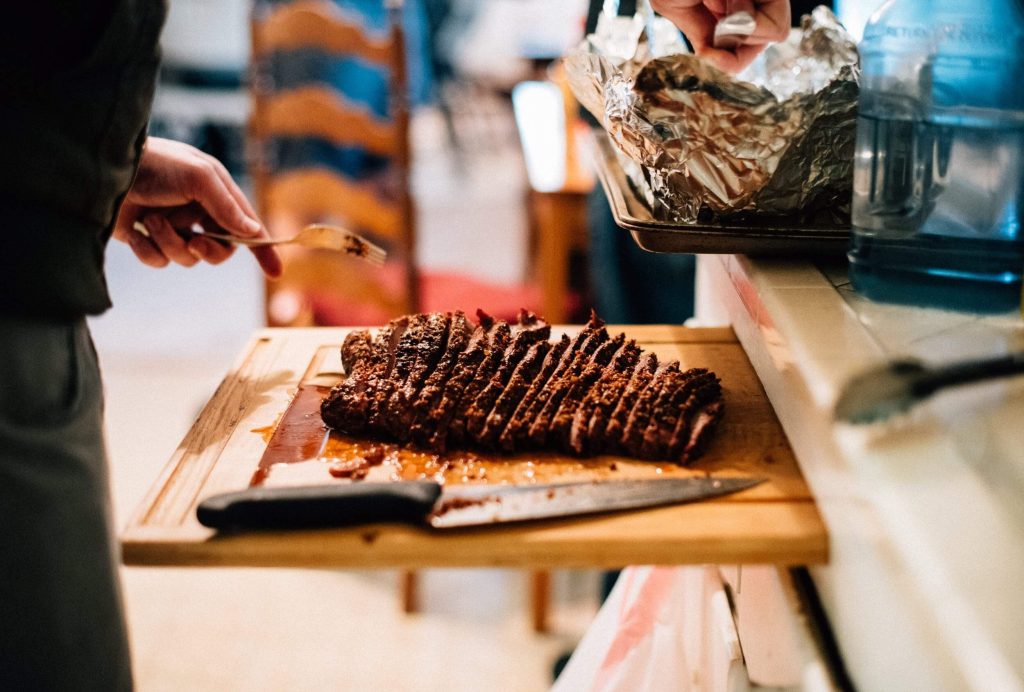How Long to Rest a Brisket? Whether cooking a brisket in an oven or a smoker, knowing when to rest it is essential to getting a juicy, tender product. This tutorial offers in-depth details on the significance of letting a brisket rest before serving as well as what transpires while it’s doing so.
The ideal cut of well-cooked brisket is a thick, moist piece with a crispy “bark,” a vivid bit of smoke, and meat that is so delicious you’ll want more. The hardest part, though, is waiting for the brisket to rest. Many folks make the error of not allowing the brisket to rest.
Given that the brisket already required several hours of cooking, it is understandable. And you are now eager to devour your brisket. While it may be tempting to dive right in, try your best to hold off since the wait is worthwhile. So, how long to rest a brisket?
The brisket should generally rest for at least an hour, but two hours is preferable. Allow 1-2 hours of rest time while keeping the meat at 140° F to ensure a juicy, delectable brisket. In this article, you’ll learn more about resting brisket, how long it takes, and why you need it.
What It Means To Rest a Brisket
It’s crucial to comprehend what resting a brisket genuinely entails before discussing how long to leave it to do so. You rest the smoked brisket when you take the beef out of the flame and let it stay for a while before slicing or serving. The meat gains an unrivaled flavor by resting since it has time to redistribute its juices.
How Long to Rest a Brisket
Smaller cuts of meat like pork chops, steaks, or chicken breast should be rested differently than a brisket. Smaller cuts need a brief period of resting at room temperature, whereas briskets need an hour to rest before serving.
Regardless of the cooking method, the finished brisket has to rest for at least an hour and no longer than two hours—every second counts when it comes to tender brisket. The brisket begins to cool down after more than a few hours at room temperature, and reheating it could make it dry.
If heat retention is a concern, you can cover the brisket in foil and tent it loosely with it or put it in an empty cooler. Brisket shouldn’t be let to rest overnight since it will grow dangerous bacteria.
Importance of Resting Brisket
Brisket needs to be prepared low and slow since it contains a lot of connective tissue and is one of the least tender beef cuts. Ensuring the brisket is well rested before cutting or serving is crucial because you worked hard to smoke the ideal piece of meat.
Water makes up about 71% of raw brisket. Even if some of this water evaporates when the food is being cooked, a thoroughly cooked brisket will still contain more than 56% water. Muscle fibers constrict and connective tissue dissolves during the cooking process. The meat’s liquid is forced outside of the meat.
Importance of brisket resting
For a variety of reasons, brisket resting is crucial.
- It enables the meat to redistribute its juices, giving you a final product that is juicier and more flavorful.
- It assists in tenderizing the meat, making it simpler to cut and consume.
- A richer flavor profile is produced after resting, enabling your ribs and barbecue sauce flavors time to mix and develop.
Due to this, it is crucial to get enough sleep. The juices will flow out, leaving the meat dry and overcooked if you don’t give the brisket time to rest after smoking. The brisket must be rested for a juicy, flavorful, and tender piece of beef.
How Long to Rest a Brisket? Resting Brisket
Removing the meat from the heat source is the first step in resting it (grill, oven, etc.). After that, take out any foil or butcher paper. After being transferred to an aluminum pan, cutting board, or any dish that may catch liquids, the meat should sit for at least an hour or until it is ready to serve.

The internal temp. of the brisket will rise by another 5 to 10 degrees while it is resting. This is frequently referred to as “carry-over cooking.” If you don’t know what you’re doing, it’s also simple to overcook your meat with this technique.
Brisket ideal internal temperature
The brisket internal temperature should reach about 200 degrees Fahrenheit before serving for the best results. The brisket should be taken out at about 190 degrees, though. As a result of the usual occurrence of carry-over cooking, which causes meat to raise a few degrees while it is resting, it must be taken out of the oven only a little before it reaches the ideal internal temperature.
In this manner, the liquids can be redistributed and the temperature can be raised during carry-over cooking without overcooking the meat. The only way to make sure you’re getting the right internal temperature is to use a meat thermometer.
Rest a Brisket Covered/Uncovered
Whether or not to cover meat while it cools has been in contention for a long time. The decision ultimately comes down to preference, even though each method has benefits and drawbacks.
- The biggest advantage of leaving the brisket on the counter uncovered is that the crust will stay crisp and whole.
- The meat will remain moisture and juicier if you decide to rest your brisket while it is wrapped.
In the end, you’re in the choice of whether or not you want to cover a brisket while it rests. Leave the brisket on the counter uncovered if you want a crispier crust.
What happens if the brisket isn’t rested?
Brisket will become dry and harsh if it is not given enough time to rest because the natural juices will not be distributed evenly throughout the meat.
All the internal liquid from a brisket that hasn’t rested will drip onto your cutting board as you cut into it. This deprives you of some of the greatest brisket components, which is unpleasant in addition to being unappetizing.
If you shorten the resting time, you’ll wind up with dry, tough meat because the juices are what gives the meat it’s moisture and tenderness
Most frequently asked questions
Q1. Why is it crucial to let a brisket rest?
The meat’s liquids may redistribute during resting, which guarantees a moist and tasty finished product. It also aids in the brisket’s ideal level of tenderness.
Q2. After cooking, how long should I let the brisket rest?
Generally speaking, a brisket should rest for at least 30 to 60 minutes. Some people like to rest their briskets for up to two hours, depending on their size.
Q3. Does the brisket need to be rested in the fridge?
The brisket doesn’t need to rest in the fridge, to answer your question. For best benefits, resting at room temperature is usually advised.
Q4. After a brisket has rested, can I reheat it?
A brisket that has rested can indeed be reheated. To reheat it, use a low-temperature oven or smoker, being cautious not to burn it or dry it out.
Conclusion
How Long to Rest a Brisket? In conclusion, giving your brisket the proper length of rest time is essential to a succulently soft cut. Following the suggested rest period guarantees a tender, juicy, and tasty brisket that will definitely be the star of any cookout or gathering. So, enjoy the benefits of a well-rested brisket by resisting the need to rush and savoring the suspense.







